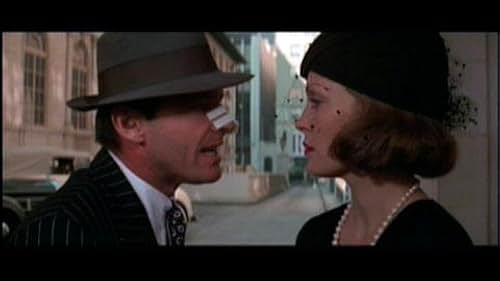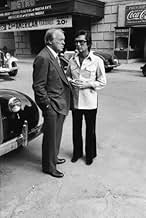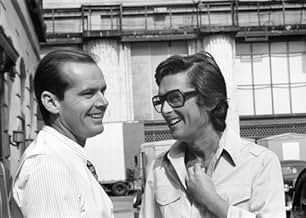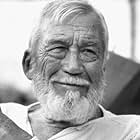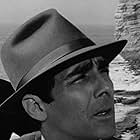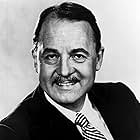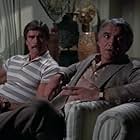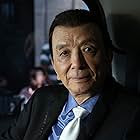A private detective hired to expose an adulterer in 1930s Los Angeles finds himself caught up in a web of deceit, corruption, and murder.A private detective hired to expose an adulterer in 1930s Los Angeles finds himself caught up in a web of deceit, corruption, and murder.A private detective hired to expose an adulterer in 1930s Los Angeles finds himself caught up in a web of deceit, corruption, and murder.
- Won 1 Oscar
- 21 wins & 24 nominations total
Richard Bakalyan
- Loach
- (as Dick Bakalyan)
James O'Rear
- Lawyer
- (as James O'Reare)
- Director
- Writers
- All cast & crew
- Production, box office & more at IMDbPro
Storyline
Did you know
- TriviaAfter several takes that never looked quite right, Faye Dunaway got annoyed and told Jack Nicholson to actually slap her. He did and felt very guilty for it, despite it being Dunaway's decision. The shot made it into the movie.
- GoofsIn the orange grove scene, Gittes's car has its right front tire shot and deflated, yet it is not deflated when the car hits the tree.
- Crazy creditsThe film opens with the 1940's Paramount logo.
- Alternate versionsTV versions omit the "screwing like a chinaman" joke told by Jake.
- ConnectionsEdited into The Two Jakes (1990)
- SoundtracksI Can't Get Started
By Ira Gershwin and Vernon Duke
Recorded by Bunny Berigan and His Orchestra
(Courtesy of RCA Records)
Featured review
Chinatown sits securely at the pinnacle of the Neo Noir genre. Fueled by Polanski-Nicholson synergy, anchored by one of greatest-ever original screenplays (written by Los Angeles native Robert Towne), brought to movie-life via PanaVision by brilliant cinematographer John Alonzo, and produced by the industry icon Robert Evans, this is one of film's greatest works of art, and being imo one of the top 20 greatest films ever made - it is a must-see movie.
Chinatown represents the art of film-making in its finest form, exceeding expectations in every reel.
This was Polanski's last film he made in the USA, and the best and last opportunity to see Nicholson's brilliant acting prowess before his characterization method became (to a large degree) a caricature of himself (albeit doing so perhaps better than any other icon-level movie-star).
Often, this much talent on one set becomes a disappointment. Not this time.
Like many successful collaborations, there were major style differences between Evans, Polanski and Towne - Such "manageable stress" can sink a film, but instead served as a positive catalyst in raising the bar of production and execution.
For those who haven't seen the film, it is "required" viewing. For those who haven't seen it in a while, cue it up, and enjoy - like most great films, it just seems to get better with age.
Polanski's style of film making utilizes a classic Noir movie-making "complete-the-scene" method before moving on - similar to live theatre (Act I, Scene 1, etc) The benefit is fulfilling each scene's importance to the story and film as a whole - this style works well in Noir films, and his set-up, detailing, and execution is brilliant.
The immaculately detailed set designs, wardrobe, makeup, and authentic restored vintage cars were painstakingly orchestrated by Polanski to transport us back to atmosphere and feel of the golden age of Hollywood circa 1937.
Chinatown is one of the greatest films ever made making it a must-see.
Chinatown represents the art of film-making in its finest form, exceeding expectations in every reel.
This was Polanski's last film he made in the USA, and the best and last opportunity to see Nicholson's brilliant acting prowess before his characterization method became (to a large degree) a caricature of himself (albeit doing so perhaps better than any other icon-level movie-star).
Often, this much talent on one set becomes a disappointment. Not this time.
Like many successful collaborations, there were major style differences between Evans, Polanski and Towne - Such "manageable stress" can sink a film, but instead served as a positive catalyst in raising the bar of production and execution.
For those who haven't seen the film, it is "required" viewing. For those who haven't seen it in a while, cue it up, and enjoy - like most great films, it just seems to get better with age.
Polanski's style of film making utilizes a classic Noir movie-making "complete-the-scene" method before moving on - similar to live theatre (Act I, Scene 1, etc) The benefit is fulfilling each scene's importance to the story and film as a whole - this style works well in Noir films, and his set-up, detailing, and execution is brilliant.
The immaculately detailed set designs, wardrobe, makeup, and authentic restored vintage cars were painstakingly orchestrated by Polanski to transport us back to atmosphere and feel of the golden age of Hollywood circa 1937.
Chinatown is one of the greatest films ever made making it a must-see.
- Instant_Palmer
- Jan 18, 2019
- Permalink
- How long is Chinatown?Powered by Alexa
Details
- Release date
- Country of origin
- Languages
- Also known as
- Barrio Chino
- Filming locations
- Production companies
- See more company credits at IMDbPro
Box office
- Budget
- $6,000,000 (estimated)
- Gross US & Canada
- $29,200,000
- Gross worldwide
- $29,231,618
Contribute to this page
Suggest an edit or add missing content




